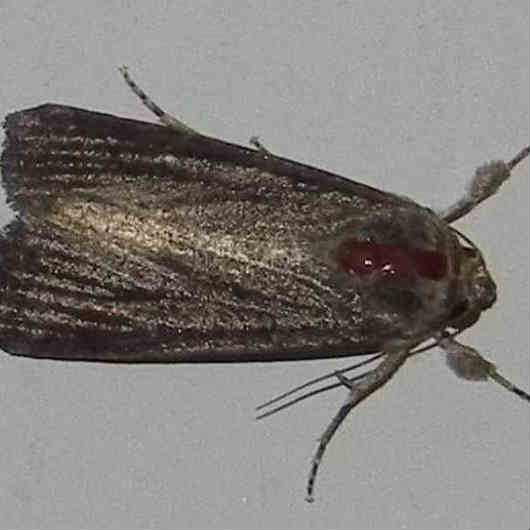
Moths: The definitive guide and how to eliminate them
One of the most common insects that often invade our homes are the annoying moths, some bugs with wings that sneak into the cabinets and cupboards to destroy everything they find there. The worst of the case is that not only destroy our clothing and eat our food, but also end up with the wood of doors, windows and furniture, becoming a real headache.
Fortunately, getting rid of them is not as difficult as some people think, and this time, we decided to tell you a little about these animals and give you some tips that will help you get them out of your life and your home once and for all.
What are moths?
It is a type of insect belonging to the lepidopteran order, in which the butterflies are also found. This group is composed of a total of 180,000 species and only 10% corresponds to the diurnal butterflies, since the rest is made up of moths and nocturnal moths.
Maybe you think of these little animals as simple butterflies but, while they bear a huge resemblance, there are some characteristics that serve to differentiate one from the other. For example, moths tend to be more active during the night, while butterflies are more active during the day. In addition, the antennae of the moths can vary in shape (like feathers or ridges), while the butterflies usually have antennas in the form of thread and with small balls at their tips.
On the other hand, the body of a moth is more robust to the eye, like hairy, and its wings are usually thicker compared to those of butterflies. Finally, the color of the moths is opaque and not very colorful, although there are some exceptions to this rule.
Why do moths appear?
Now that you have an idea of what moths are, you may be interested in knowing the causes of their appearance.
Well, generally, these animals love to settle between all kinds of cracks, so if your house is full of them, it is very likely that you experience an infestation because of these bugs. As a solution to this problem, you must take care to seal all the cracks, otherwise, the moths will expand and become a real plague.
Another factor that greatly influences the appearance of these insects is lighting. The rooms with low light and also have cracks everywhere are the perfect place for the lodging of the moths, since these bugs are better developed in dark conditions.
Likewise, having plants with flowers inside homes can be another cause of an infestation, since some species usually feed on the nectar of flowers during a stage of their life, and an example of these are the so-called Miller moths.

Occasionally, moths often invade homes because of products that have been previously infested, as they may be hidden in fabrics or foodstuffs. In this case, we are the ones who propitiate their appearance and proliferation, even when there are no cracks in our walls, low lighting conditions or plants in the interior, because the introduction of these bugs to our homes is at our expense.
Are my clothes and wood in danger?
Fortunately, of all the species of moths that exist in the world, only a few feed on the fabrics and wood. However, it is very likely that this type of animals appear among our clothes if it has not been washed and has remained a long time or in the drawers of the closet. In addition, humidity in the wood is attractive to these insects, who do not hesitate to use it as a hiding place.
Finally, these animals can also appear among books that are not cleaned or shaken frequently, since they accumulate dust particles and this is very attractive.
Types or species of moths
As we have said before, there are thousands of types or species of moths, but this time we will talk about the most common and problematic for human beings.
Clothes moth
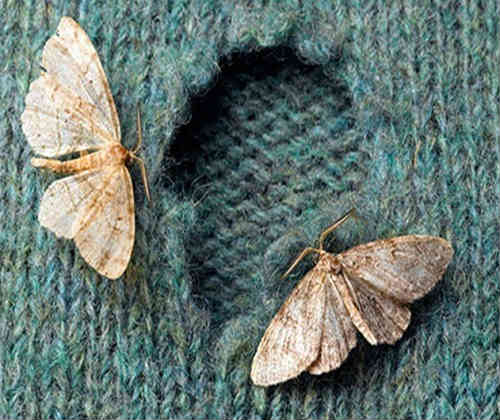
They have been called that way because they are able to manufacture and drag their larvae that develop and feed thanks to the fabric of the clothes.
Brown house moth

This species is characterized by feeding on fabrics such as wool, leather and silk, and can kill the cabinets, beds and equipment of homes infested if it is not detected and removed in time.
Carpet moth
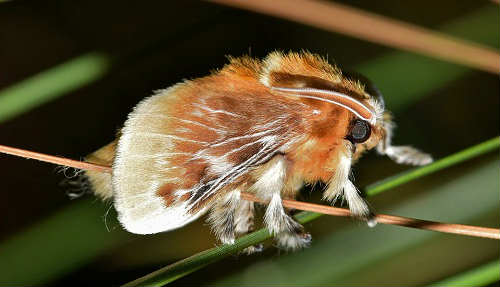
These little bugs are the most common in most homes and, as the name implies, they usually nest among the carpets, feeding on the fabric.
Grain moth

This category includes many other species, among which are the wax moth and the lesser moth of bees. These insects feed on all kinds of grains and grasses that are stacked in pantries and other storage places.
Potato tuber moth

This particular species usually attacks the herbaceous plants of great economic importance, and one of them is the potato. To make matters worse, these animals are able to finish not only with the plant, but also with the product already harvested, so they represent a huge threat to agriculture.
Bite or sting of moths
Most moths are harmless to humans, only bite wood and other materials that serve as food, and rarely attack people. However, while some of these insects feed on fruits and organic waste, there are certain specimens that prefer to feed on the blood of humans and other vertebrates. An example of this are the so-called vampire moths found in Siberia, which respond to the name of Calyptra and have the ability to suck the fluids for more than 20 minutes.

Anyway, although these animals are practically harmless, some of them can come to attack us and leave us a small wound resulting from their bite, which although it is not very common, there is still a small probability of occurrence.
Are moths dangerous?
The moths are considered especially dangerous at the crop level, since they consume the nectar of the flowers, the sap of the plants and even the fruits of the same. However, they are not harmful to the health of humans, unless it is the blood-sucking species, of which we spoke earlier.
However, there are some species whose flakes on their wings can cause allergic reactions in sensitive people, although it is not an imminent risk or an extremely serious problem. However, there is a particular type of moth, known as the caterpillar of the flannel moth or cat’s moth, whose poisonous hairs can cause pain and skin rashes, and in more serious cases, can cause swelling, nausea and problems with breathe.
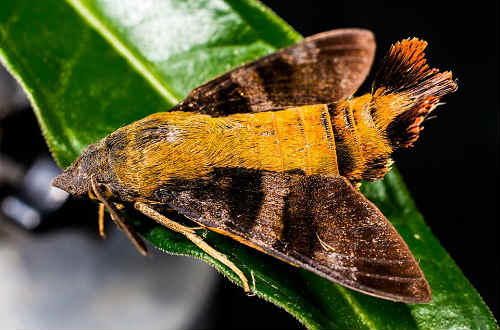
Finally, we must not forget that the existence of the moths represents a risk for our homes and for those who inhabit them, since, although they do not usually attack us, they tend to devastate the wood and the bases of the constructions, which can cause the structure weakens and ends up falling.
How to eliminate moths
When it comes to exterminating these annoying bichillos, there are different alternatives to which we can resort, but the most common forms of disinsection are physics and chemistry. The first one is usually the best of both options, although its execution is not as easy as some people think, and it practically involves the methods of freezing, eliminating oxygen and using gamma rays.
Regarding chemical methods, they are considered quite dangerous for health, so they must be used with great care, especially if it is pentachlorophenol, whose toxicity can affect people and the environment, making it indispensable to use face masks. carbon during its application in outdoor environments.
If you decide to use an insecticide in liquid format, it is important to have an injector that facilitates the application for each and every one of the holes, and finish with a brush or brush for a better distribution and absorption of the product.
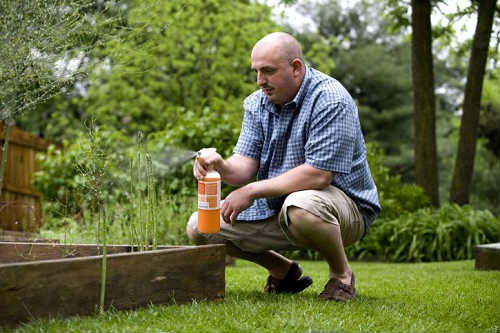
On the other hand, if it is insecticides in solid format, these should be placed on the surface of the affected furniture and then covered with a hard plastic, so that it remains sealed for 15 days. Of course, the procedure must be carried out in an open space and without objects or garments inside.
One year after the date of fumigation, it will be enough to inject a little insecticide in liquid format in the holes where the problem persists and the matter will be solved.
Home remedies to eradicate moths
If fumigation with chemical products and physical treatment are not the most appealing solution for you, you may be interested in trying some home remedies that we consider quite effective to eliminate these annoying bugs.
Bay oil
To protect your furniture from the attack of the moths, you can rub the wood with a little bit of laurel oil, since it works as a powerful repellent against these and other insects.
The truth is that it is an easy product to get, but if you do not have it at home, you can make your own with ground bay leaves and olive oil or jojoba. To do this, you must put the crushed leaves in a glass container and then fill it with enough oil so that they are barely covered. Then, you must leave the mixture at rest for at least a month and, after that time, you can use it to rub the wood of the furniture that has been infested by these insects.
Rosemary, thyme and mint infusion
Spices not only serve to give flavor to our meals, but also work as natural repellents against pests, such is the case of rosemary, thyme and mint.
Well, if you want to benefit from its properties, you can make an infusion with dried leaves of these three herbs and, once it is at room temperature, you can place it in a container with spray and spray it on the areas affected by the moths. This remedy is also effective against other pests such as mosquitoes and spiders.
Lemon and orange peel

The aroma of citrus fruits is unbearable for most bugs, and moths are no exception. You can take some lemon and orange peels in sealed cloth bags, and then place them in the pockets of the clothes you have in the drawers and in the closet, not only serve as a natural repellent, but also leave your clothes with an exquisite to Rome.
More tricks to kill moths
If you have been able to prepare homemade remedies for lack of an ingredient, you can resort to these tricks that we have left you to help you finish the moths once and for all.
Naphthalene
Naphthalene sachets are one of the oldest tricks to dispose of moths, as are paradichlorobenzene and camphor. If you do not have naphthalene, you can replace it with grains of black pepper, dried mint leaves or sage, and even by flowers of lavender, just remember to deposit them in cloth bags so they are not watered over there or stain the clothes of your drawers.
Clove

Like naphthalene, the cloves are excellent to ward off pests, you just have to put some of them in the pockets of your clothes and this will prevent them from ending up bored because of these animals.
Cedar oil
Cedar oil is especially useful for killing pests. Be sure to place it in a well-sealed container so it will not spill or stain your furniture or your clothing.
Well, now that you know everything you should about moths, you just have to choose the most appropriate method of extermination for you and follow our advice to end them at once.
Other interesting articles about moths
Related posts
Contents
